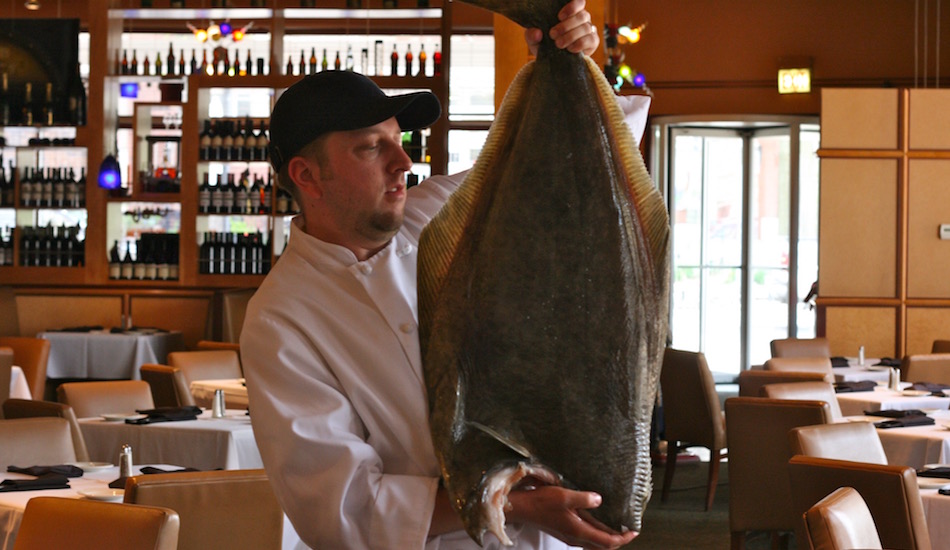Offers in this blog post are expired

Fresh Alaskan Halibut
Fresh Alaskan Halibut Facts
Well, Pacific halibut is one of the largest flatfish found in the pacific coastal waters from California to Alaska. It is only available fresh for a period of time from March until November.
Catch 35 only sources our halibut from Alaskan coastal waters because it has the best texture and flavor. Halibut is a versatile fish that can come in a variety of preparations.
Low in saturated fat and sodium but a great source of protein and minerals.
Fresh Alaskan halibut is a lean fish with mild, sweet tasting white flesh, large flakes and a firm but tender texture. Because of its leanness this fish becomes dried-out if overcooked. Frozen halibut is denser and less moist than fresh halibut and is easier to overcook.
Typical Cooking Methods
Except for deep frying and sushi, cook Halibut to an internal temp of about 125° – 130° F. This leaves the fish tender and moist. Our favorite method is to grill or saute.
Description: Halibut are the largest of all flatfish. They average about 25-30 lbs but can weigh go as high as 600 lbs and 8 feet long.
Halibut are a right-eyed flounder and have two distinctly colored sides. They are dark brown and off white with slight tinges of pink.
Sustainability Summary: Pacific halibut or halibut from the coastal waters of California to Alaska are sustainable and are carefully watched. Pacific halibut is seafood that’s fished or farmed in ways that have less impact on the environment.
Catch 35 Menu option:
Fresh Alaskan Halibut T-bone with maitre d hotel butter, potatoes, and creamed spinach
- The T-bone is meatier with a firmer and juicier texture.
- T-bone steaks are firm, white, and meaty.
- An excellent source of high-quality protein, omega-3 fatty acids, and minerals, makes halibut a perfect option for the Spring season.
At Catch 35, Halibut is celebrated as the “Steak” of fishes, so in that same sense, we prepare the halibut t-bone steak as our other “From the Farm” premium steaks with a compound butter filled with herbs and spices, roasted potatoes, and our ultimate side creamed spinach.
Wine pairing recommendation
You can go red or white here. White wines stick to the Sauvignon Blanc to balance out the richness of the t-bone. Choose a stone-fruit forward Sauvignon. As for reds, a Merlot that is softer and bit more rounded out than a Cab. Try a merlot from Washington State. It exhibits elements of cabernet yet subtle features of a merlot.
